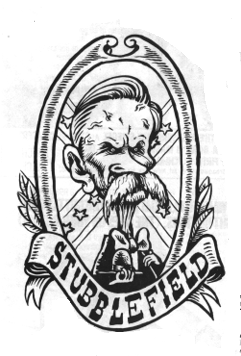
On this date in 1928, Nathan Stubblefield, a Kentucky melon farmer and the inventor of a method for wireless broadcasting audio before Tesla or Marconi’s invention of the radio, died.
Stubblefield’s “radio” work via audio frequency induction or, later, audio frequency earth conduction (creating disturbances in the near-field region) rather than by radio frequency radiation for radio transmission telecommunications).
Back home in Murray, he continued to experiment with wireless telephony, using large circular conduction coils to transmit voice frequencies to receiving stations. In 1903, he could transmit 375 feet (114 m) without earth connections, using induction. In 1904, he could transmit 423 yards. The total wire required for the transmitting and receiving coils was of a greater length than what would be required to simply interconnect the transmitter and receiver, but the invention would allow mobility. By 1907, with a 60-foot (18 m) transmitting coil, he could work 1/4 mile or 1,320 feet (400 m) “nicely.” On May 12, 1908, he received U.S. patent 887,357 for his Wireless Telephone, using the voice frequency induction system. He said in the patent that it would be useful for “securing telephonic communications between moving vehicles and way stations”. The diagram shows wireless telephony from trains, boats, and wagons. In foreign patents he showed wireless telephony with cars. However, there is no indication that he was using voice-modulated continuous high frequency waves, as used for radio today.
Stubblefield eventually went into seclusion and died of starvation in a Kentucky shack in 1928.